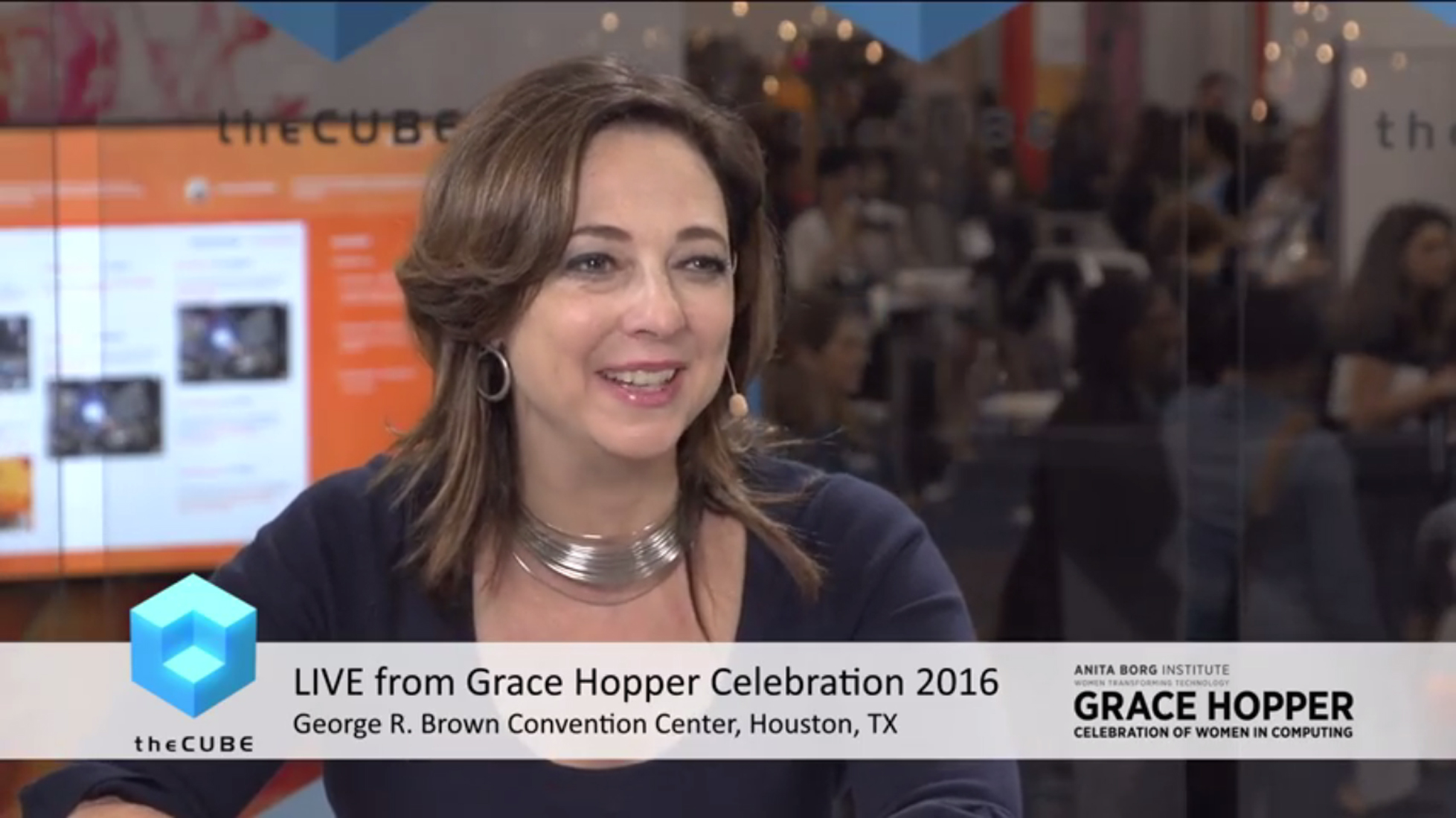 WOMEN IN TECH
WOMEN IN TECH
 WOMEN IN TECH
WOMEN IN TECH
 WOMEN IN TECH
WOMEN IN TECH
In business or societal settings, there can be a clash in temperaments between introverts, who are hesitant to speak up, and the extroverts, who can easily overwhelm the dialogue. While both styles have their drawbacks and their strengths, it’s a good idea to use the best of both, balancing out their unique energies to bring forth the best possible conversational outcome.
Susan Cain, co-founder and chief revolutionary at Quiet Revolution, joined Rebecca Knight (@knightrm), co-host of theCUBE, from the SiliconANGLE Media team; Tori Bedford, associate producer at WGBH and TechTruth fellow; and Alicia Mies, junior TechTruth fellow, during the Grace Hopper Celebration of Women in Computing in Houston, TX. They spoke about the differences between introverted and extroverted communication styles and how best to harness the power of each for successful teams.
Bedford referred to Cain’s talk earlier in the day, where she said introversion and extroversion are not binary, they occur across a spectrum. Knowing this, how can people use differing styles to make better teams?
“We know from management research, as well as daily lives, the best-performing teams tend to be a combination of extroverts and introverts, because we bring such different strengths to the table,” explained Cain. “If you have a team that’s all extroverts, you’d all be rushing off in one direction, not even sure it’s the direction you want to take. If you had a team that was all introverts, you might be suffering from, say, not enough dynamism to propel you forward. So you really need both types there.”
She went on to say that her company, Quiet Revolution, works on normalizing this discourse. The styles themselves are not a big deal; it’s just how people want to spend their time. “When there’s conversation, we can all adapt to each other’s preferences,” she said.
Mies said she has observed in classroom settings that there’s a perception that men are extroverted and women are introverted. Cain agreed, saying, “There’s a narrow channel women are asked to surf, of not being too quiet and docile on one hand or too loud and aggressive on the other hand.”
Mies asked if she had a message to introverts on how not to get lost among the extroverts in a discussion.
“One thing I’d say is, get in the habit of pushing yourself outside of your comfort zone. Something I often recommend is to think in advance of a point you’d like to make or contribute, and then giving yourself a little push to speak up early in the class discussion instead of waiting,” Cain advised. “Once you make that point, it becomes an ‘anchor’ for conversation, where people start directing their energy to you. If you wait, you start to feel like you’re on the margins, waiting, and you feel that, emotionally, and then when [you] do go to talk, [you] get drowned over.”
Stay tuned for the complete video interview below, and be sure to check out more of SiliconANGLE and theCUBE’s coverage of the Anita Borg Institute’s Grace Hopper Celebration of Women in Computing.
THANK YOU